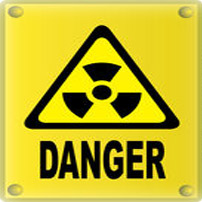MENU
- Home
- Overview
- Attorneys
- Practice Areas
- Firm News
- Blog
- Contact
 Millions of employees report to offices and job sites where they are in contact with dangerous chemicals every day. It could be at a hospital, a construction site, a laboratory, or a host of other places. Companies are obligated to protect their staff from these hazards, and employees should be vigilant about taking precautions as well.
Millions of employees report to offices and job sites where they are in contact with dangerous chemicals every day. It could be at a hospital, a construction site, a laboratory, or a host of other places. Companies are obligated to protect their staff from these hazards, and employees should be vigilant about taking precautions as well.
There are many different kinds of chemical toxins in workplaces. Such toxins include:
Bodily harm from these toxins can occur after long periods of exposure, or during a one-time accident. Severe burns, blindness, respiratory problems, mesothelioma, and cancer are a handful of the wide range of harmful results of toxic exposure.
Chemical manufacturers make Material Safety Data Sheets (MSDS) available for companies, and these provide detailed information about the chemicals, their toxicity, reactivity, storage, health effects, protective equipment, and more. Companies should have MSDS books on site and adhere to their specifications.
The Occupational Safety and Health Administration (OSHA) provides a Hazard Communication Standard, which was created to communicate the proper information about all substance hazards and safety procedures to all employees. This includes training on how to handle the chemicals, and how to protect themselves around them.
Occupational Exposure Limits, or OELs, govern chemical exposure levels in workplaces. OSHA’s Permissible Exposure Limits (PELs) protect workers by setting limits on airborne concentrations of dangerous chemicals. There are around 500 types of PELs, and specific ones for general industry, construction, and shipyards.
According to OSHA, company leadership has the most responsibility for controlling hazardous chemical and toxic substance exposure in their workplaces. Work practices and engineering controls need to be established and administrated effectively at all times.
Employees should also be highly cautious when working around and with toxic chemicals. Using protective gear such as face masks and goggles is crucial. Ventilation is another critical safety measure, and can be accomplished by diluting the chemical’s concentration with uncontaminated air. Isolating the chemicals in a separate area when they are not in use also reduces exposure, and the chemicals must always be properly labeled and their use monitored.
Having a safe workplace environment is an employee right, not a privilege. Yet even with safety precautions in place, accidental and unknown overexposure to hazardous chemicals occurs in workplaces. Other incidences occur if the company is not adhering to environmental regulations, or if material shipment, storage, or handling is done improperly. It can also occur if safety procedures are outdated.
If an employee becomes sick or experiences other bodily harm, they could be entitled to a Worker’s Compensation claim. In these cases, it is important to see a physician right away for an accurate diagnosis. If it is determined that the illness is from toxic exposure at work, the employer may have been negligent.
If you or someone you care for is suffering the effects of hazardous chemical exposure, contact a highly experienced Dover chemical and toxic exposure injury lawyer at Jacobs & Crumplar, P.A. We are ready to help you get the compensation you deserve. Call 302-656-5445 or contact us online. Our offices are located in Georgetown and Wilmington, Delaware and our attorneys practice nationwide.